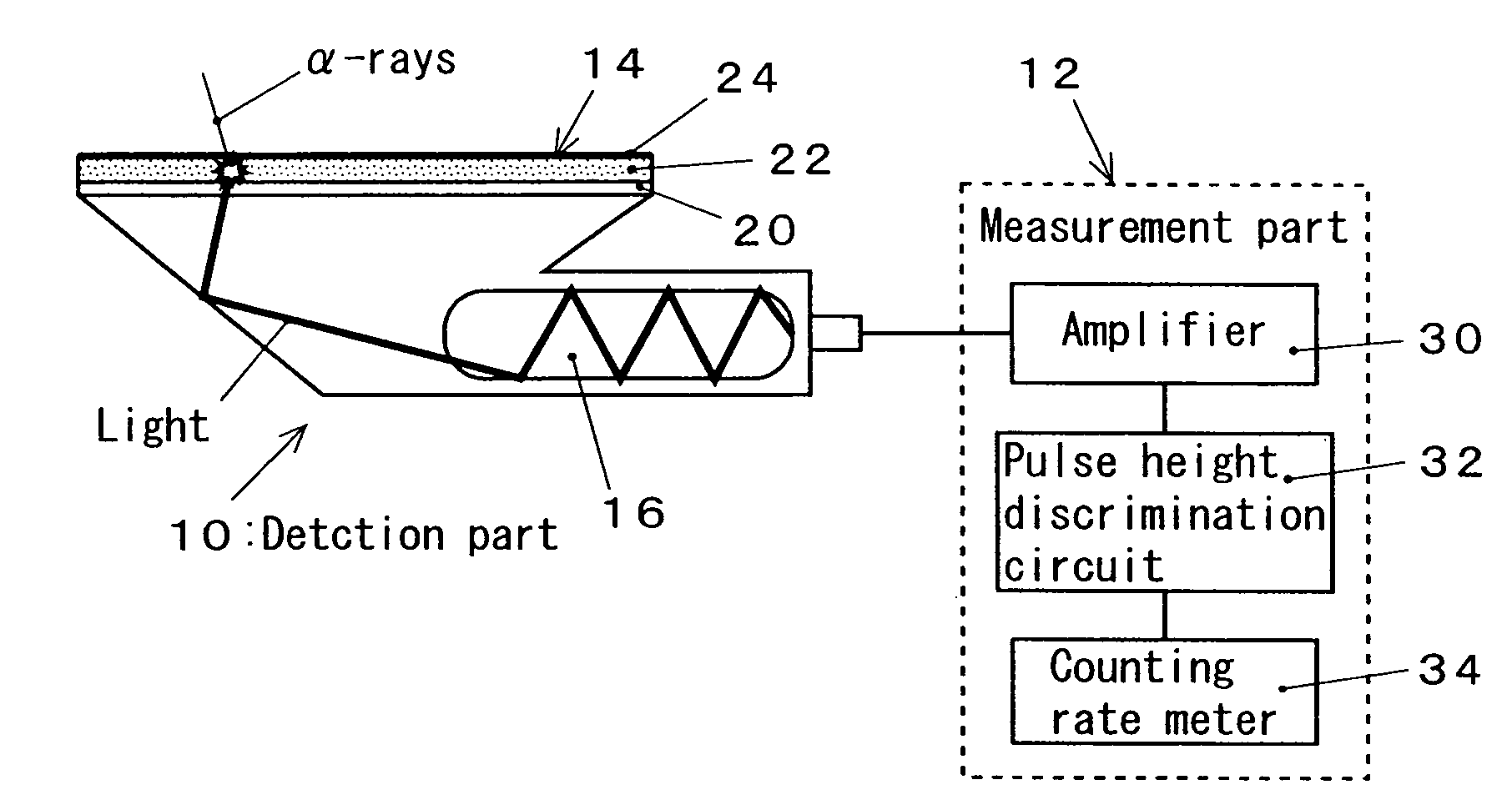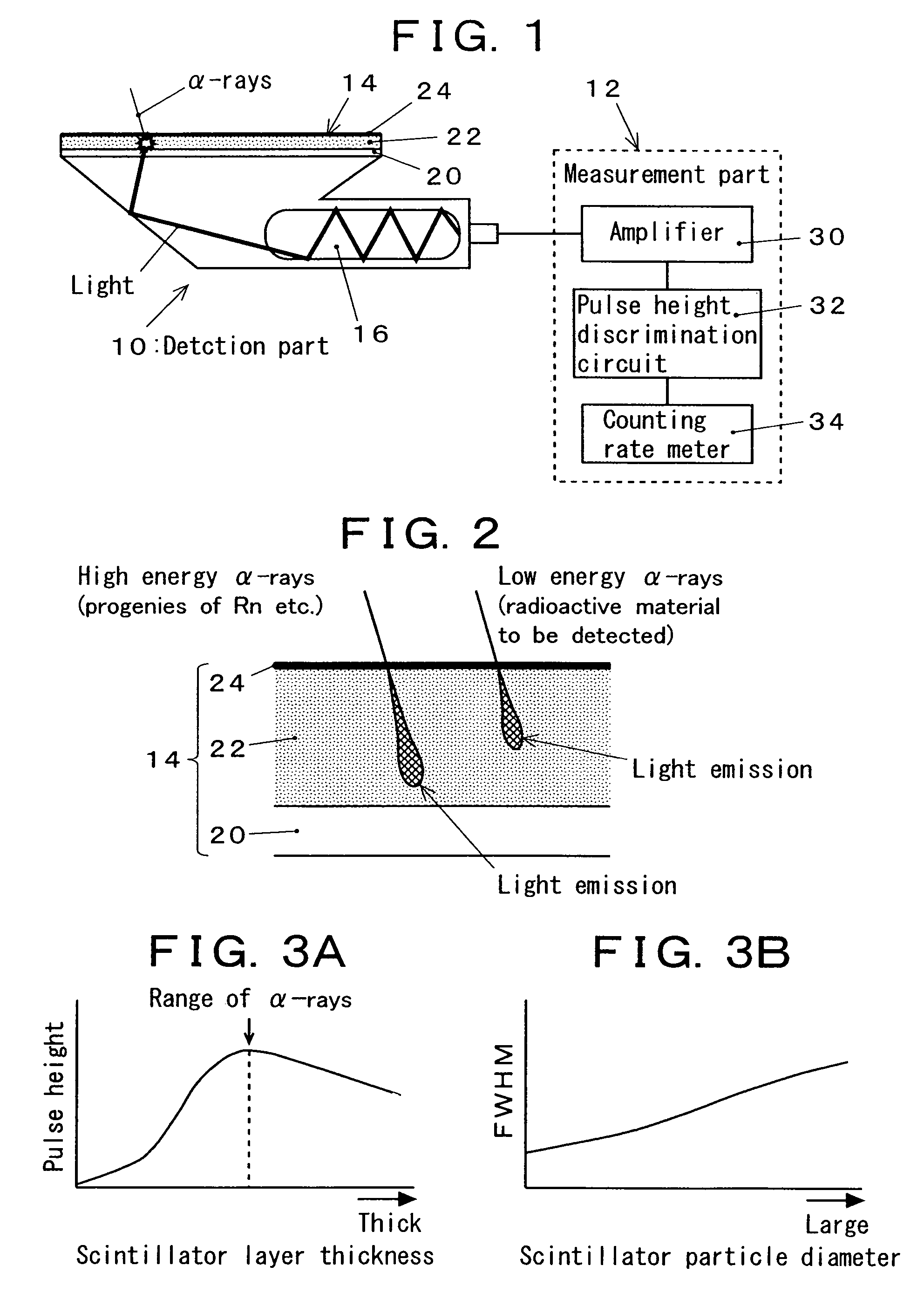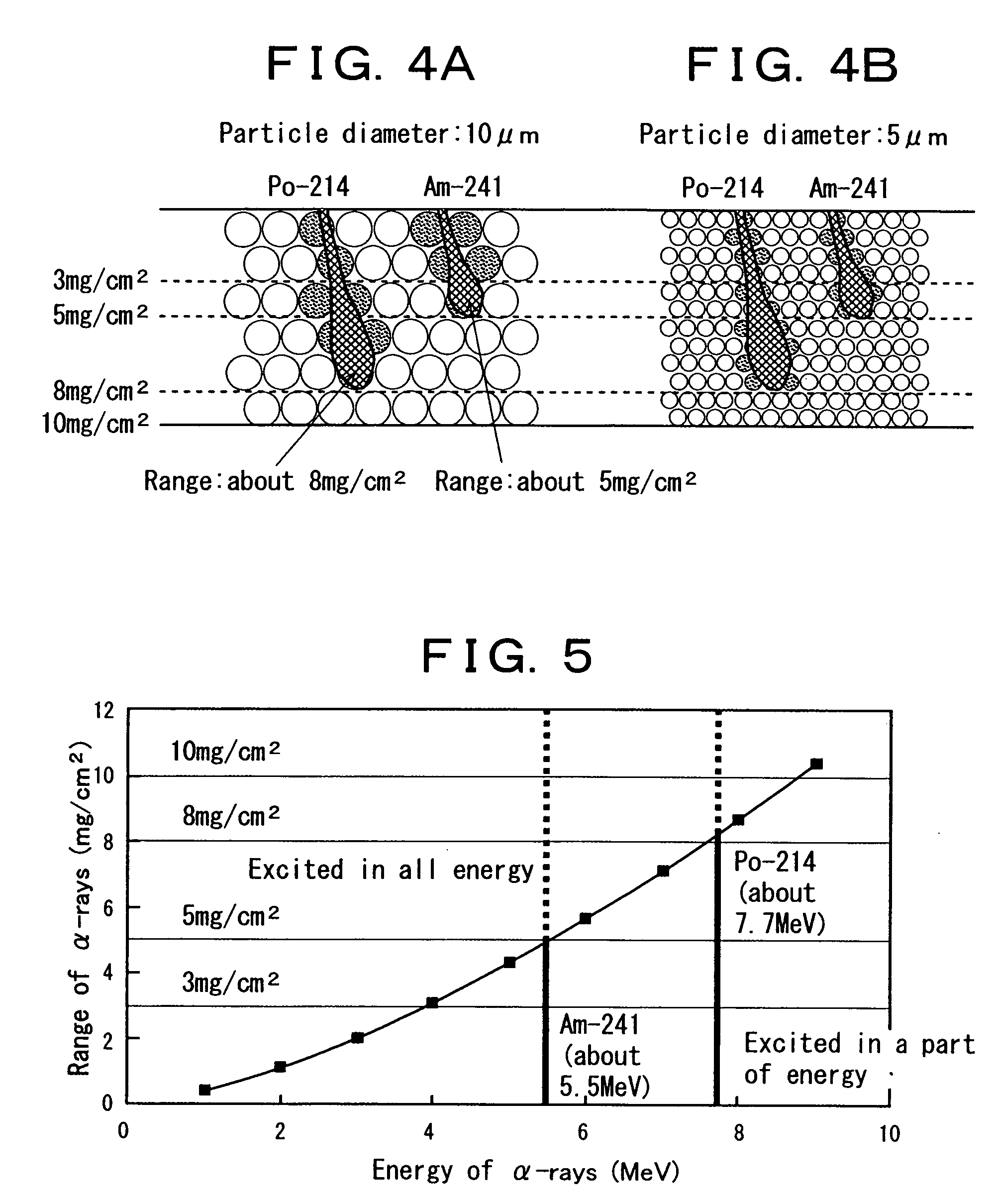ZnS(Ag) scintillation detector
a scintillation detector and scintillation technology, applied in the field of scintillation detectors, can solve the problems of difficult to achieve the pulse height discrimination function of the conventional zns (ag) scintillation detector, and achieve the effect of reducing the counting of -rays and efficiently and smoothly carrying out contamination control
- Summary
- Abstract
- Description
- Claims
- Application Information
AI Technical Summary
Benefits of technology
Problems solved by technology
Method used
Image
Examples
example
[0022]FIGS. 4A and 4B schematically show a relationship between the scintillator layer thickness, the particle diameter of scintillator, and the quantity of emitted light. FIG. 4A shows the case where the particle diameter of scintillator is large (for example 10 μm), and FIG. 4B shows the case where the particle diameter of scintillator is small (for example 5 μm). Here, the α-ray emitting nuclide to be separated is Po-214. The energy of α-rays of Am-241 (the radioactive material to be detected) is about 5.5 MeV (range: about 5 mg / cm2), and the energy of α-rays of Po-214 (progeny of radon) is about 7.7 MeV (range: about 8 mg / cm2). In FIGS. 4A and 4B, the particles denoted by dots represent the ZnS (Ag) scintillators which are excited by the incidence of α-rays and emit light. As can be seen from FIGS. 4A and 4B, in the case of the scintillator layer with a thickness of 5 mg / cm2 or less, the number of scintillators which are made to emit light by α-rays of Am-241 is not significantl...
PUM
 Login to View More
Login to View More Abstract
Description
Claims
Application Information
 Login to View More
Login to View More - R&D
- Intellectual Property
- Life Sciences
- Materials
- Tech Scout
- Unparalleled Data Quality
- Higher Quality Content
- 60% Fewer Hallucinations
Browse by: Latest US Patents, China's latest patents, Technical Efficacy Thesaurus, Application Domain, Technology Topic, Popular Technical Reports.
© 2025 PatSnap. All rights reserved.Legal|Privacy policy|Modern Slavery Act Transparency Statement|Sitemap|About US| Contact US: help@patsnap.com



